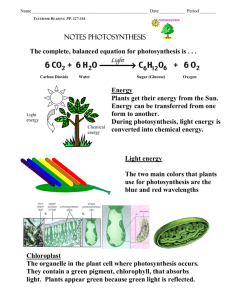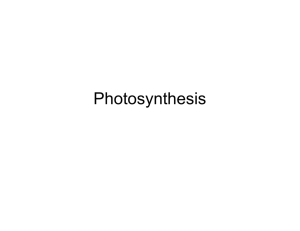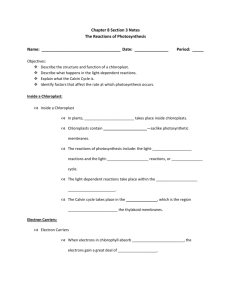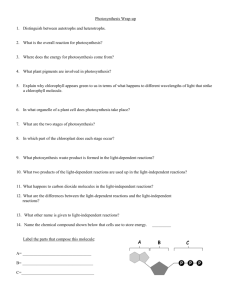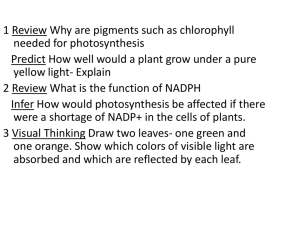Photosynthesis: An Overview
advertisement
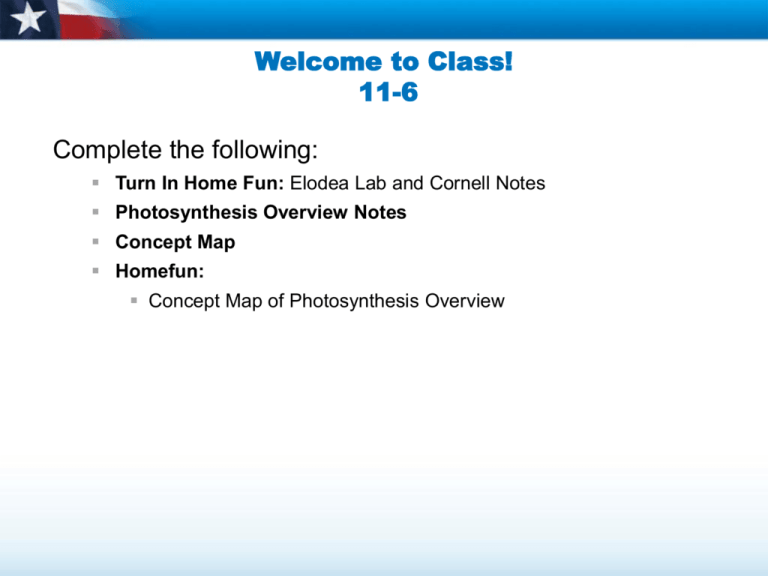
Welcome to Class! 11-6 Complete the following: Turn In Home Fun: Elodea Lab and Cornell Notes Photosynthesis Overview Notes Concept Map Homefun: Concept Map of Photosynthesis Overview Photosynthesis: An Overview Learning Objectives Explain the role of light and pigments in photosynthesis. Explain the role of electron carrier molecules in photosynthesis. State the overall equation for photosynthesis. Light • Light energy from the sun must be captured for photosynthesis to occur. • Sunlight is “white” light—actually a mixture of different wavelengths. Chlorophyll Photosynthetic organisms capture energy from sunlight with pigments—principally with chlorophyll. Chlorophyll Photosynthesis takes place inside organelles called chloroplasts. Plant Cell Chloroplast Chloroplast In plants, photosynthesis takes place inside chloroplasts. Stroma Thylakoid Granum Thylakoid membrane High Energy Electrons The high-energy electrons produced by chlorophyll are highly reactive and require a special “carrier.” High Energy Electrons An electron carrier is a compound that can accept a pair of high-energy electrons and transfer them, along with most of their energy, to another molecule. High Energy Electrons NADPH can carry the high-energy electrons that were produced by light absorption in chlorophyll to chemical reactions elsewhere in the cell. An Overview of Photosynthesis Photosynthesis uses the energy of sunlight to convert water and carbon dioxide (low-energy reactants) into high-energy sugars and oxygen (products). light Carbon dioxide + Water → Sugars + Oxygen 6CO2 6H2O + C6H12O6 light → 6O2 + Photosynthesis and Light Photosynthesis involves two sets of reactions: Light-dependent reactions Light-independent reactions Light-Dependent Reactions Light-dependent reactions require the direct involvement of light and light-absorbing pigments. Water Oxygen Light-Independent Reactions Light-independent reactions use ATP and NADPH molecules produced in the light-dependent reactions to produce high-energy sugars from carbon dioxide Carbon Dioxide Sugars and Carbohydrates Interdependence of Reactions Light-dependent and light-independent reactions have an interdependent relationship.
